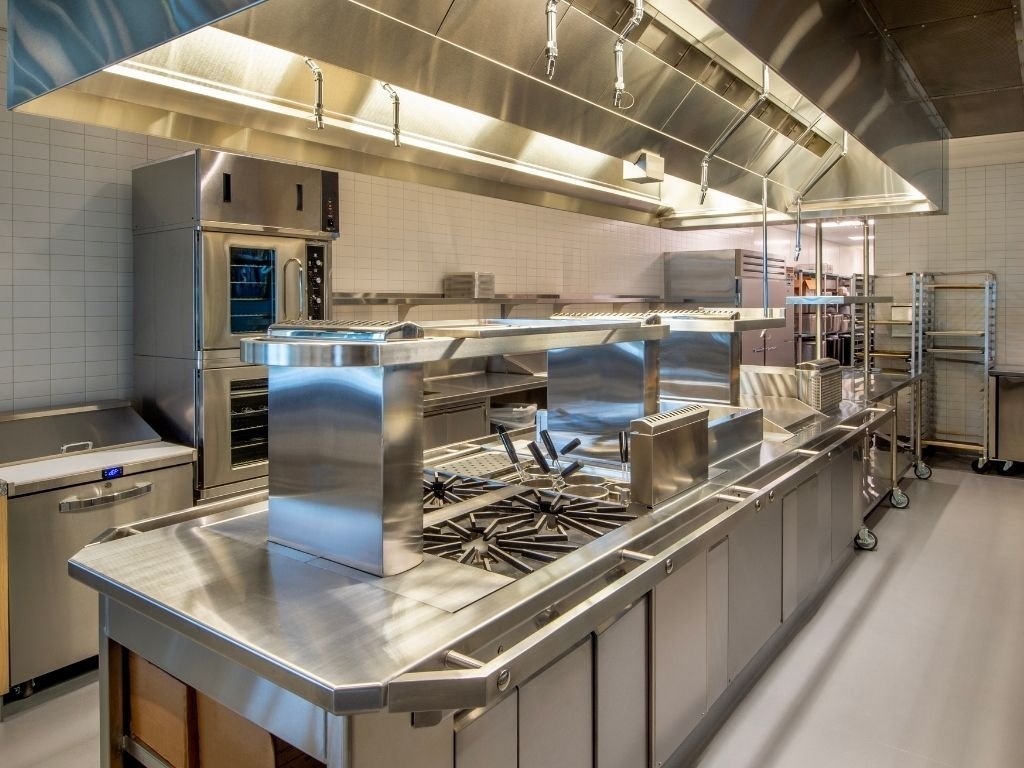For restaurant owners and commercial kitchen managers, plumbing issues can quickly escalate from minor inconveniences to major operational disruptions. At Lanham’s Plumbing, we’ve helped countless food service businesses resolve and prevent costly drainage problems. This guide focuses on one of the most critical yet often neglected aspects of commercial kitchen maintenance: proper grease management and drainage care.
Understanding the High Stakes of Commercial Kitchen Plumbing
Commercial kitchens face unique plumbing challenges due to:
- High-volume water usage
- Food waste disposal
- Grease and oil accumulation
- Constant demand for functional systems
- Strict health department regulations
- Potential for business interruption
When drainage systems fail in commercial kitchens, the consequences extend beyond repair costs to include:
- Forced temporary closures
- Health code violations and potential fines
- Lost revenue and inventory
- Customer dissatisfaction
- Staff safety hazards
- Environmental compliance issues
The Critical Role of Grease Traps
Grease traps (or grease interceptors) serve as your first line of defense against one of the most common causes of commercial kitchen plumbing failures: FOG (Fats, Oils, and Grease) accumulation in drain lines.
How Grease Traps Work
These specialized plumbing devices capture grease before it enters your drainage system by:
- Slowing wastewater flow to allow cooling
- Separating lighter fats and oils, which float to the surface
- Allowing cleaner water to flow through while retaining grease
- Accumulating solids at the bottom of the trap
Signs Your Grease Trap Needs Immediate Attention
- Slow-draining sinks, especially in dishwashing areas
- Foul odors emanating from drains
- Water backing up into floor drains
- Gurgling sounds from plumbing fixtures
- Multiple clogged drains throughout the kitchen
Best Practices for Grease Management
1. Establish Proper Cleaning Schedules
The frequency of grease trap maintenance depends on your kitchen’s volume and cooking style. However, most commercial kitchens require:
- Small under-sink units: Cleaning every 1-2 weeks
- Medium in-floor units: Cleaning every 1-3 months
- Large external interceptors: Pumping every 2-6 months
Pro Tip: Keep detailed maintenance logs for health department inspections and to establish optimal cleaning intervals for your specific operation.
2. Train Staff on FOG Management Protocols
Even the best grease trap can’t compensate for poor kitchen practices. Implement these protocols:
- Scrape and dry-wipe pots, pans, and dishes before washing
- Install and properly maintain drain screens in all sinks
- Properly dispose of waste oil in designated containers (never down drains)
- Post clear signage about grease handling procedures
- Designate a staff member to oversee compliance
- Include grease management in new employee training
3. Invest in Preventative Maintenance
Beyond regular grease trap cleaning, comprehensive preventative maintenance should include:
- Quarterly professional inspections of complete drainage systems
- Annual hydrojetting of key drain lines to remove accumulation
- Camera inspections to identify potential issues before they cause failures
- Backflow prevention device testing and maintenance
- Floor drain cleaning and maintenance
Beyond Grease: Other Commercial Kitchen Plumbing Considerations
Water Temperature Management
Commercial dishwashers require specific water temperatures for proper sanitation. Ensure your water heating system:
- Maintains consistent temperatures (typically 140-160°F for wash cycles)
- Has sufficient capacity for peak demand periods
- Receives regular maintenance to prevent efficiency loss
- Includes properly functioning mixing valves to prevent scalding
Water Pressure Optimization
Commercial kitchens require adequate water pressure for proper equipment function. Too little pressure affects cleaning efficiency, while excessive pressure can damage fixtures and increase leak risks.
Recommended Actions:
- Install pressure gauges to monitor system performance
- Consider pressure-regulating valves if fluctuations occur
- Ensure proper sizing of supply lines for equipment needs
Emergency Preparedness
Every commercial kitchen should be prepared for plumbing emergencies:
- Clearly mark all water shut-off valves
- Create an emergency contact list including your commercial plumbing service
- Train multiple staff members on emergency protocols
- Keep basic tools accessible (plungers, wrenches, leak containment materials)
- Develop contingency plans for severe plumbing failures
The Value of Professional Commercial Kitchen Plumbing Services
While daily maintenance can be handled internally, commercial kitchens should establish relationships with plumbing professionals who understand the unique demands of food service operations. Professional services provide:
- Code compliance expertise
- 24/7 emergency availability
- Specialized equipment access
- Preventative maintenance programs
- Documentation for insurance and regulatory requirements
Partner with Lanham’s Commercial Plumbing Division
At Lanham’s Plumbing, our commercial division specializes in restaurant and food service plumbing systems. We offer customized maintenance programs designed to prevent costly emergencies while ensuring your kitchen operates at peak efficiency.
Contact us today to schedule a comprehensive kitchen plumbing assessment or to learn more about our commercial maintenance programs tailored specifically for food service businesses.
Investing in proper plumbing maintenance isn’t just about avoiding problems—it’s about protecting your business, reputation, and bottom line.

